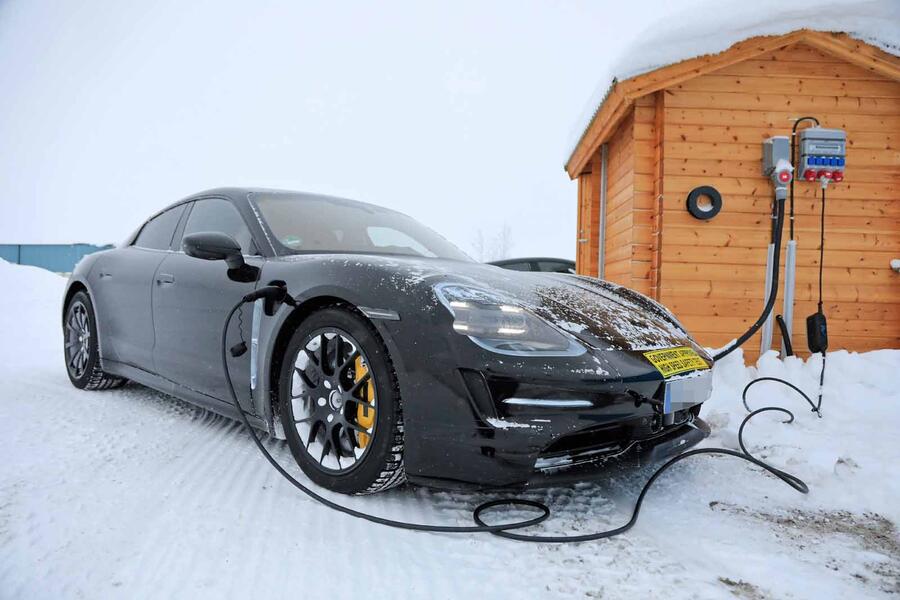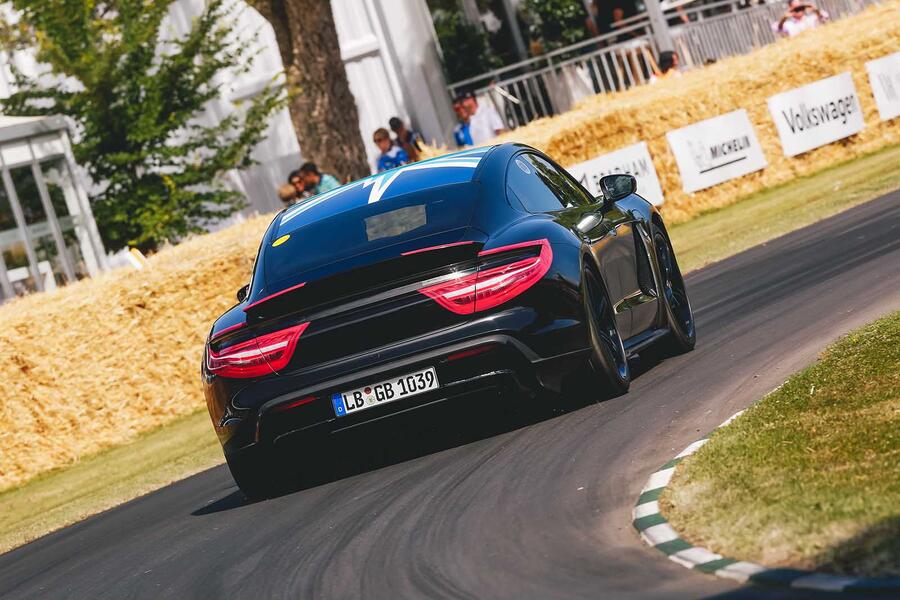Porsche has released a teaser image showing the rear of its first electric production car, the Taycan, ahead of its reveal later today.
The new Porsche Taycan has now been revealed. Click here for the full story
The Tesla Model S rival will be unveiled at an event in Berlin at 2pm UK time ahead of a public debut at the Frankfurt motor show next week.
Autocar drives a Porsche Taycan prototype
Porsche has previously revealed a number of details about the Taycan, including images of the car's interior, which takes the brand's design and technology to a new level. It's based around up to four digital displays, including a curved, free-standing 16.8in configurable driver's display - Porsche's first fully digital instrument binnacle.
To the right of that is a 10.9in infotainment screen that handles sat-nav, music and connectivity functions. To the right of that - uniquely for Porsche - is an optional screen of the same size. It can't control driving functions, but it allows the front passenger to programme the sat-nav and media features independently.

Finally, there's an 8.4in portrait layout screen set at an angle in the centre console, with a trackpad below to help control the upper screen. Unlike the upper two touchscreens, this gives haptic feedback to improve usability on the move.
Wireless updates - traditionally a big draw for Tesla buyers - are also possible in the Taycan. Buyers will also receive a free six month subscription to Apple Music, with Apple CarPlay integration also included. Android Auto functionality is not available, however.
Despite the distinctly high-tech approach, classic Porsche features such as the dash-top analogue clock still feature.





































































































































 Taycan rivals include Tesla Model S
Taycan rivals include Tesla Model S
 Significantly, the platform has been conceived exclusively as a dedicated electric vehicle architecture, with Weckbach confirming it doesn't accept a combustion engine. It does, however, form the basis of a more versatile structure being developed in an engineering programme between Porsche and Audi called the Premium Platform Electric (PPE).
Significantly, the platform has been conceived exclusively as a dedicated electric vehicle architecture, with Weckbach confirming it doesn't accept a combustion engine. It does, however, form the basis of a more versatile structure being developed in an engineering programme between Porsche and Audi called the Premium Platform Electric (PPE).
 In a move aimed at imbuing the Taycan with the sort of rear-biased handling traits that have characterised Porsche models through the years, the two electric motors have varying outputs, with the one at the rear more powerful than the one at the front. A torque vectoring function on both axles also regulates the amount of drive sent to each individual wheel.
In a move aimed at imbuing the Taycan with the sort of rear-biased handling traits that have characterised Porsche models through the years, the two electric motors have varying outputs, with the one at the rear more powerful than the one at the front. A torque vectoring function on both axles also regulates the amount of drive sent to each individual wheel.  Even so, Porsche is convinced the Taycan will bring lofty new dynamic qualities to the electric car ranks.
Even so, Porsche is convinced the Taycan will bring lofty new dynamic qualities to the electric car ranks.

Join the debate
Add your comment
Honestly thank you so much for your page. I’ve perused all kinds of topics on your channel, and I always thoroughly enjoy all of your conten
I don't think the main rival for Teslas will be a legacy car brand, or even from Europe, I really believe it will come from Polestar, Polestar 2 will be a viable competitor to Model 3 and Polestar 3 will be a possible opponent of this model. There are a lot of fun, free games available on the internet these days, I usually play
run 3
The information you have posted is very useful. The sites you have referred was good. Thanks for sharing. run 3